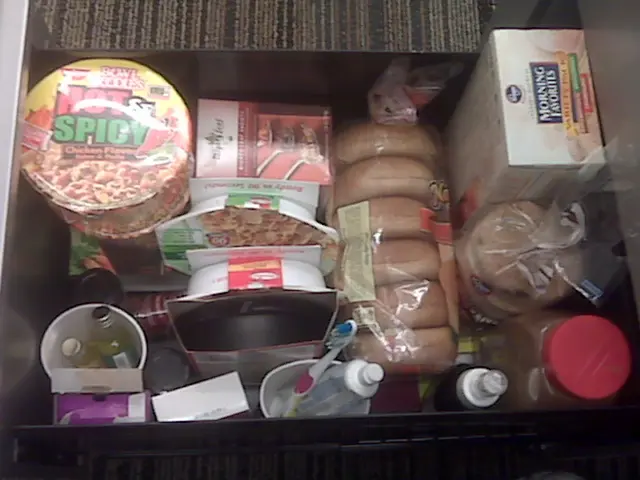DIY Adventure: Our Personal Experience Building a Rustic Country Garden Cabin
In a determined effort to bring a charming off-grid country garden cabin to their property, the writer embarked on a DIY adventure. The cabin, previously owned by others who had to let it go, was moved from its original location using moving wheels.
Once on the writer's property, the cabin was propped up on wooden blocks, and a makeshift deck was created using pallets. To ensure a durable, fixed foundation suitable for long-term use, the cabin was anchored down with foundation piles made from concrete post anchors.
Here's a step-by-step guide on how to anchor a Country Garden cabin using a concrete post anchor:
- Choose appropriate concrete post anchors designed for the size and weight of your cabin posts.
- Prepare your site by marking where each post will be located, ensuring they align with the cabin’s base.
- Dig holes to the recommended depth and width for the anchors, usually below frost line or stable soil level.
- Set the concrete post anchors in the dug holes, ensuring they are level and plumb.
- Pour concrete around the anchors and allow it to cure fully (usually 24-48 hours).
- Secure the cabin posts into the anchors, using bolts or screws per anchor design to attach posts firmly.
- Check for stability and level, adjusting as needed.
For additional stability or protection against strong winds, supplement anchors with ground anchors or tie-down kits designed for sheds or cabins. Also, avoid storing flammable materials near or inside the cabin if anchoring outdoors.
The article also discusses various methods for urban food production, making and planting seed bombs, and a Permaculture Design Project. However, no specifics are provided about these topics.
As for the Permaculture Design Course and the Ten Years Yard-to-Garden Initiative, no details are given in this article. The writer invites readers to subscribe to their newsletter and follow them on Instagram, Facebook, or Pinterest for updates on these and other projects.
Now, the off-grid country garden cabin is snug on its foundation piles and ready to face whatever weather comes its way. The writer's property has been transformed into a mini oasis, thanks to this DIY adventure.
[1] Source for concrete post anchor information [3] Source for DIY techniques [4] Source for supplementary anchors [5] Source for safety and local building code considerations
The writer decided to plant seeds of vegetables in raised beds, embracing the permaculture lifestyle, bringing a touch of home-and-garden to their off-grid rural abode. Recognizing the cold climate, they chose resilient crops and incorporating them into their garden design.
Taking inspiration from the DIY steps for anchoring the cabin, the writer thought of building stabilizing posts around the garden beds filled with soil, using concrete post anchors for a firm foundation.
During their family's weekend gatherings, they planned to engage in bonding activities while seeding and planting together, making a communal effort in growing their food and personally connecting with nature.
While searching online resources, they found helpful information on designing and setting up urban food production systems, providing useful tips for creating their mini garden within the mini oasis they've established.
Finally, before starting any major home improvements, the writer advised readers to familiarize themselves with local building codes and safety regulations, ensuring compliance and preventing any potential hazards when building and planting in cold climates.




